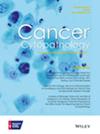Evaluating the diagnostic accuracy of imprint and scrape cytology for intraoperative risk stratification of ovarian tumors: A systematic review and meta-analysis
Abstract
Background
Accurate intraoperative assessment of ovarian tumors is crucial for guiding surgical management. The objective of this systematic review and meta-analysis was to evaluate the diagnostic accuracy of imprint and scrape cytology for intraoperative risk stratification of ovarian tumors.
Methods
A comprehensive literature search was conducted across multiple databases to identify studies that assessed the sensitivity, specificity, positive predictive value, and negative predictive value of imprint and scrape cytology in distinguishing benign and malignant ovarian tumors. Data were pooled using a bivariate random-effects model. The methodological quality of included studies was assessed using the quality assessment of diagnostic accuracy studies 2 tool.
Results
In total, 34 studies comprising 3318 ovarian tumors were included in the current review. Analysis indicated that the pooled sensitivity of imprint cytology was 89%, whereas the pooled specificity was 92%. The positive and negative likelihood ratios, calculated using a random-effects model, were 8.47 (95% confidence interval [CI], 5.27–13.61) and 0.16 (95% CI, 0.12–0.21), respectively. The pooled diagnostic odds ratio was 63.42 (95% CI, 37.5–107.27). For scrape cytology, the pooled sensitivity and specificity were 89% and 97%, respectively. The positive and negative likelihood ratios were 21.05 (95% CI, 12.36–35.84) and 0.14 (95% CI, 0.09–0.22), respectively. The pooled diagnostic odds ratio was 180.46 (95% CI, 88.01–370.03). Both techniques demonstrated high diagnostic accuracy, and scrape cytology was particularly effective in detecting malignancies.
Conclusions
Imprint and scrape cytology are valuable intraoperative diagnostic tools for ovarian tumor stratification, offering rapid and reliable results. Their integration into surgical decision making may enhance intraoperative management, particularly in resource-limited settings. Further studies with standardized protocols are needed to refine their clinical utility.





 求助内容:
求助内容: 应助结果提醒方式:
应助结果提醒方式:


